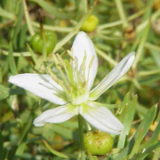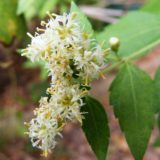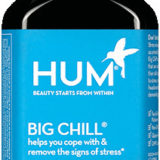Table of Contents
What Common Medicines Are Natural From Plants?
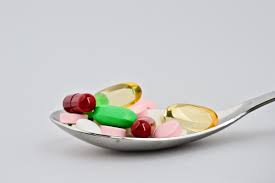
Are There Medicines That Come From Plants?
The world of plants and medicine has been one of the longest practices in all of human tradition. Plants of all types have been found used in cultures dating nearly as far back as has been recorded. Tribes around the world today, still use ancient and traditional remedies which are all-organic, plant-based and effective. Many of the medicines which are for sale today in modern, Western cultures are also nearly entirely (if not entirely) plant-based or plant-derived. Even with how many plants are used as remedies today, there is still a lot more to be discovered too! In fact, only about 1-2 percent of all tropical plants have been analyzed for any psychoactive or medicinal values, and that is a super rough estimate too!
In short, yes, there are medicines which come from plants…or perhaps: plants which have been used as medicines. Some have proven more popular and/or more effective than others. And some of these organic remedies and plant-based medicines have withstood the test of time (being used for a long period of time and still being used today), while others have only been used medicinally for a short while. But which medicines today are entirely plant based? The Botanical Shaman has categorized some natural, organic, plant-based remedies below by medicinal purpose.*
Medicines Made From Plants
This is a list of some of the natural, plant-based medicines for a variety of purposes, ailments and conditions. They are in alphabetical order.
Antibiotics
The following plants have been used as natural antibiotics, possessing antimicrobial compounds (no prescription required):
- Cayenne Pepper (Capsicum annuum)
- Citrus Family Extracts (Grapefruit Seed extract, for example)
- Echinacea (Daisy Family)
- Elmleaf Blackberry (Rubus ulmifolius)
- European, Sweet Chestnut (Castanea sativa)
- Garlic Oil (from Allium sativum)
- Ginger (Zingiber officinale)
- Olive Leaf (from Olea europaea)
- Oregano (Origanum vulgare)
- Tumeric (Curcuma longa)
Anti-inflammatory
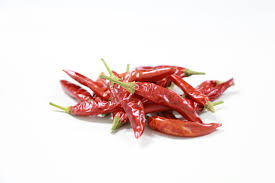
The following plants have been found to have anti-inflammatory properties:
- Aloe (Aloe Vera)
- Black Pepper (Piper nigrum)
- Cayenne Pepper (Capsicum annuum)
- Cinnamon (from Cinnamomum trees)
- Cloves (Syzygium aromaticum)
- Curcumin (from Tumeric, Curcuma longa)
- Elderberry (of the Sambucus genus)
- European, Sweet Chestnut (Castanea sativa)
- Feverfew (Tanacetum parthenium)
- Ginger (Zingiber officinale)
- Guggul (Commiphora wightii)
- Holy Basil (Ocimum tenuiflorum)
- Indian Frankincense (Boswellia serrata)
- Liquorice (Glycyrrhiza glabra)
- Neem (Azadirachta indica)
- Rosemary (Rosmarinus officinalis)
- Sage (Salvia officinalis)
- Saw Palmetto Extract (from the fruit of Saw Palmetto)
- Slippery Elm (Ulmus rubra)
- Spirulina Algae (Arthrospira platensis and A. maxima)
Aphrodisiacs
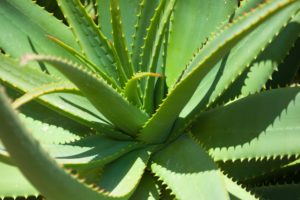
The following plants are commonly used for their arousing, aphrodisiac effects:
- Aloe (Aloe Vera)
- Artichoke (Cynara cardunculus)
- Ashwagandha (Withania somnifera)
- Avocado (Persea americana)
- Bananas (Musa acuminata, Musa balbisiana, and Musa paradisiaca)
- Camellia (Camellia sinensis)
- Celery (Apium graveolens)
- Cocoa Bean (from Theobroma cacao)
- Date Palm (Phoenix dactylifera)
- Fenugreek (Trigonella foenum-graecum)
- Garden Asparagus (Asparagus officinalis)
- Garlic (Allium sativum)
- Ginkgo (Ginkgo biloba)
- Ginseng (Panax Ginseng)
- Long Jack (Eurycoma longifolia, also known as Tongkat ali)
- Maca Root Extract (from Lepidium meyenii)
- Onion (Allium cepa)
- Parsley (Petroselinum crispum)
- Rhodiola Extract (from Rhodiola rosea)
- Wild Yam (Dioscorea villosa)
Cough Suppressant

The following plants have been known to be used to treat coughs:
- Basil (from the Lamiaceae family)
- Black Pepper (Piper nigrum)
- Bromelain (from Ananas comosus, aka “Pineapple”)
- Cocoa Bean (from Theobroma cacao)
- Ginger (Zingiber officinale)
- Horehound (Marrubium vulgare)
- Hyssop (Hyssopus officinalis)
- Lemon (Citrus limon)
- Liquorice (Glycyrrhiza glabra)
- Marshmallow (from Althaea officinalis)
- Mullein (from the Verbascum genus)
- Oregano (Origanum vulgare)
- Passion flower (from the Passiflora genus)
- Peppermint (Mentha x piperita [hybrid between watermint and spearmint], Mentha balsamea)
- Sage (Salvia officinalis)
- Slippery Elm (Ulmus rubra)
- Thyme (Thymus vulgaris)
- Violets (from the Viola family)
- White Pine (Pinus strobus)
- Wild Cherry Bark (from Prunus serotina)
- Yarrow (Achillea millefolium)
Digestive Treatments (for Gastrointestinal Problems)
The following plants have been suggested as natural remedies for digestive problems:
- Black Cohosh (Actaea racemosa)
- Bromelain (from Ananas comosus, aka “Pineapple”)
- Cabbage (Brassica oleracea)
- Catechin (Epigallocatechin gallate, found in Green Tea)
- Dandelion (of the Taraxacum genus)
- Flaxseed (from Linum usitatissimum)
- Ginger (Zingiber officinale)
- Green Chiretta (Andrographis paniculata)
- Milk Thistle (Silybum marianum)
- Skullcap (the genus Scutellaria)
- Slippery Elm (Ulmus rubra)
- Tumeric (Curcuma longa)
- Yarrow (Achillea millefolium)
Immune System, Strengthening the

The following plants have been used or suggested to help build the immune system:
- Ashwagandha (Withania somnifera)
- Astragalus (genus of about three thousand herbs)
- Catechin (Epigallocatechin gallate, found in Green Tea)
- Cayenne Pepper (Capsicum annuum)
- Chinese Honeysuckle (Combretum indicum)
- Citrus Family Extracts (Grapefruit Seed extract, for example)
- Echinacea (Daisy Family)
- Elderberry (of the Sambucus genus)
- Garlic Oil (from Allium sativum)
- Ginger (Zingiber officinale)
- Ginseng (Panax Ginseng)
- Green Chiretta (Andrographis paniculata)
- Lemon (Citrus limon)
- Oregano (Origanum vulgare)
- Shiitake (Shiitake mushrooms)
- Tumeric (Curcuma longa)
Mood Stabilizers
The following plants are known to be used as natural mood stabilizers:
- 5-HTP (extracted from the seeds of Griffonia simplicifolia)
- Ashwagandha (Withania somnifera)
- Catuaba (from the trees Trichilia catigua and Erythroxylum vaccinifolium)
- Five-Flavor Berry (Schisandra chinensis, aka “Schizandra”)
- Ginkgo (Ginkgo biloba)
- Ginseng (Panax Ginseng)
- Kava Kava (Piper methysticum)
- Lavender (from the Lavandula genus)
- Maca Root Extract (from Lepidium meyenii)
- Mulberry Bark (from the Mulberry tree)
- Passion flower (from the Passiflora genus)
- Rhodiola Extract (from Rhodiola rosea)
- Saffron Spice (extracted from Crocus sativus)
- St John’s Wort (Hypericum perforatum)
- Velvet Bean (from Mucuna pruriens)
- Yohimbine Extract (from the bark of the Pausinystalia Yohimbe tree)
Pain Relief

The following plants have been employed as analgesics or for their pain relieving properties:
- Allspice (Pimenta officinalis)
- Aloe (Aloe Vera)
- Bee Balm (Monarda didyma)
- Capsaicin (from Capsicum annuum)
- Cloves (Syzygium aromaticum)
- Datura (Datura spp.)
- Devil’s Claw (Harpagophytum procumbens)
- Eucalyptus (Eucalyptus globulus)
- Feverfew (Tanacetum parthenium)
- Hops (Humulus Lupulus)
- Horse Chestnut (Aesculus hippocastanum)
- Kava Kava (Piper methysticum)
- Kelp (Fucus vesiculosis)
- Kratom (Mitragyna speciosa)
- Nutmeg (Myristica fragrans)
- Peppermint (Menta x piperita)
- Saffron Spice (extracted from Crocus sativus)
- Sassafras Root (Sassafras albidum)
- Spearmint (Mentha spicata)
- Stinging Nettle (Urtica dioica)
- Thyme (Thymus vulgaris)
- Tumeric (Curcuma longa)
- Wild Lettuce Extract (from Lactuca virosa)
- Willow Bark Extract (from the Salix spp.)
- Yucca Root (from the Yucca spp.)
Sedatives, Stress-relief and Relaxants
The following plants have been employed as sedatives, stress-relievers or relaxants:
- Ashwagandha (Withania somnifera) [versatile, stimulant and relaxant properties]
- Blue lotus (Nymphaea caerulea)
- California Poppy (Eschscholzia californica)
- Catnip (Nepeta cataria)
- Chamomile (Matricaria chamomilla or Chamaemelum nobile)
- Damiana (Turnera diffusa)
- Five-Flavor Berry (Schisandra chinensis, aka “Schizandra”)
- Hops (Humulus Lupulus)
- Kava Kava (Piper methysticum)
- Kratom (Mitragyna speciosa) [versatile, stimulant and relaxant properties]
- Lavender (from the Lavandula genus)
- Lemon Balm (Melissa officinalis)
- Marihuanilla (Leonurus sibiricus)
- Marijuana (Cannabis)
- Motherwort (Leonurus cardiaca)
- Passion flower (from the Passiflora genus)
- Red Clover (Trifolium pratense)
- Sinicuiche (Heimia salicifolia)
- Skullcap (Scutellaria lateriflora)
- St John’s Wort (Hypericum perforatum)
- Valerian Extract (from Valeriana officinalis)
- Wild dagga (Leonotis leonurus)
- Wild Lettuce Extract (from Lactuca virosa)
- Yan Hu Suo (Corydalis genus)
Stimulants
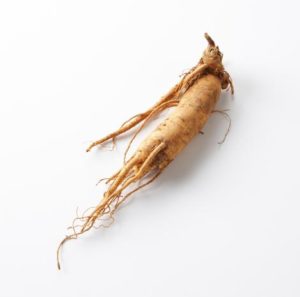
The following plants have been well-known and used for their natural stimulating effects:
- Ashwagandha (Withania somnifera) [versatile, stimulant and relaxant properties]
- Betel Nut (Areca nut)
- Camellia (Camellia sinensis)
- Cathinone (from the Knat plant, Catha edulis)
- Cocoa Bean (from Theobroma cacao)
- Coconut Oil (Coccos nucifera)
- Coffee (Coffea arabica and Coffea canephora)
- Dandelion (of the Taraxacum genus)
- Ephedra (Ephedra sinica)
- Ginger (Zingiber officinale)
- Ginkgo (Ginkgo biloba)
- Ginseng (Panax Ginseng)
- Gotu Kola (Centella asiatica)
- Guarana (Paullinia cupana)
- Huperzine A (Huperzia serrata)
- Kola Nut (from the Cola genus)
- Kratom (Mitragyna speciosa) [versatile, stimulant and relaxant properties]
- Lion’s Mane (Hericuium erinaceus)
- Oat Straw (Avena sativa)
- Rhodiola Extract (from Rhodiola rosea)
- Tobacco (Nicotiana spp.)
- Velvet Bean (from Mucuna pruriens)
- Yerba Mate (Ilex paraguariensis)
Vasodilators
The following plants have been shown to have properties of vasodilation, which means they are able to dilate (open) blood vessels (useful for conditions like high blood pressure):
- Bilberry (from the Vaccinium genus)
- Catechin (Epigallocatechin gallate, found in Green Tea)
- Catuaba (from the trees Trichilia catigua and Erythroxylum vaccinifolium)
- Cayenne Pepper (Capsicum annuum)
- Five-Flavor Berry (Schisandra chinensis, aka “Schizandra”)
- Ginger (Zingiber officinale)
- Ginkgo (Ginkgo biloba)
- Gotu Kola (Centella asiatica)
- Horse Chestnut (Aesculus hippocastanum)
- Lotus (Nelumbo nucifera)
- Orange (Citrus sinensis)
- Parsley (Petroselinum crispum)
- Willow Bark Extract (from the Salix spp.)
Disease or Ailment-Treating, or Other Uses
The following plants are known to provide helpful effects for certain diseases or other ailments (marked below next to the plant):
- Astragalus (genus of about three thousand herbs) – Used to treat colds
- Bacopa (Bacopa monnieri) – Used to treat epilepsy, asthma, ulcers, tumors, and a variety of other ailments, also used to increase cognitive function and decrease stress
- Camellia (Camellia sinensis) – Used to improve memory and cognitive function (L-theanine)
- Catechin (Epigallocatechin gallate, found in Green Tea) – Used for preventative, protective benefits against cancer
- Chamomile (Matricaria chamomilla or Chamaemelum nobile) – Used for muscle spasms
- Chinese Angelica (Angelica sinensis) – Used to treat anemia and cardiovascular diseases
- Coffee (Coffea arabica and Coffea canephora) – Used as a bronchodilator and to treat asthma
- Elderberry (of the Sambucus genus) – Used to fight flu and cold symptoms
- Ginger (Zingiber officinale) – Used for circulation, to fight cold symptoms and also for nausea
- Green Chiretta (Andrographis paniculata) – Used to treat infections, and several diseases, also used to prevent influenza
- Huperzine A (Huperzia serrata) – Used to improve memory, cognitive function and reflexes
- Rhodiola Extract (from Rhodiola rosea) – Used to treat erectile dysfunction
- Thyme (Thymus vulgaris) – Used to treat some respiratory illnesses
- Wild Yam (Dioscorea villosa) – Used for muscle spasms
Real, Natural and Effective Herbal Remedies
Most people do not think beyond their orange prescription bottles or the many options available in the drug store, however, there are many herbal remedies that have been used by cultures around the world for centuries (sometimes even thousands of years). And the more amazing news, is that there are potentially overwhelming amounts of plants out there with medicinal or pharmacological uses still waiting to be discovered. Pharmaceutical companies typically tend to stick with what works for as long as it works, which is why the same few drugs are still being used today, which have been used for decades (opiates, diazepam, amphetamines, etc). The natural, plant-based medicines which are found on this list, are some fine examples of herbal remedies that have stood the test of time!
*Disclaimer: The Botanical Shaman is not a medical doctor and this information should not be a substitute for medical advice. This article is for educational purposes only.
